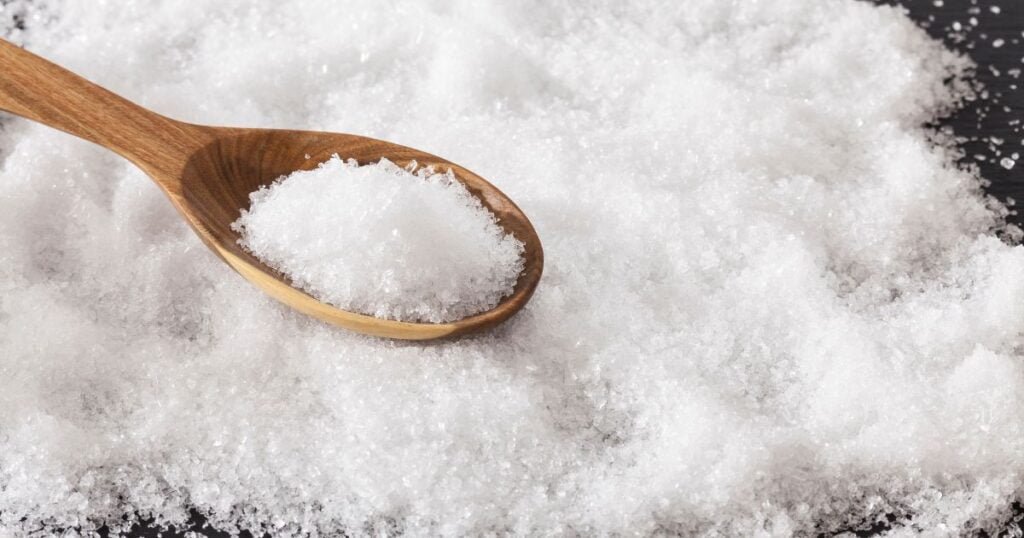Salt, known chemically as sodium chloride (NaCl), contains a giant ionic lattice structure held together by strong electrostatic forces between oppositely charged ions. Specifically, sodium and chloride form an ionic bond in salt that gives it many of its familiar physical and chemical properties.

The Chemistry of Sodium and Chlorine
The key to understanding the nature of this bond starts with the elements involved – sodium and chlorine. Sodium is a very reactive soft metal that easily gives up its single valence electron to other atoms. Chlorine is a very electronegative halogen atom with seven valence electrons in its outer shell. Due to these intrinsic atomic properties, when sodium and chlorine combine, the sodium readily donates its valence electron to the chlorine, creating positively charged sodium ions (Na+) and negatively charged chloride ions (Cl-).
These complementary positive and negative charges generate a strong electrostatic force of attraction between the ions known as an ionic bond. Each sodium ion is surrounded by numerous chloride ions and vice versa in a continuous 3D lattice. The positive and negative charges balance out in this type of bond.

The ionic bond formed is very strong, giving salt its characteristic high melting and boiling point, brittleness, and tendency to easily dissolve in water into its composite ions. The polar nature of water enables it to effectively pull apart the ions from their crystal lattice structure through solvation and dissociation.
Beyond the Salt Shaker
The ionic bond between sodium and chlorine isn’t just a culinary curiosity. It’s a fundamental principle that underpins the properties of numerous materials we encounter daily. From the conductivity of table salt in solution to the structural integrity of concrete, ionic bonding plays a vital role in various industries and technologies.
Pinch of Knowledge: Fun Facts About Salt
- The word “salary” originates from the Latin word “salarium,” which referred to the payment of Roman soldiers in salt.
- The Dead Sea, with a salinity ten times that of the ocean, is one of the saltiest bodies of water on Earth.
- Salt has been used for centuries as a preservative, and it remains an essential ingredient in food processing and storage.
In summary, common table salt consists of an ionic compound where the sodium cation and chloride anion are held together by powerful attractive electrostatic forces in an ordered structure. The complementary charges give rise to salt’s typical physical and soluble properties that differ markedly from its constituent elements. This allows the isolation of this vital nutrient compound for human and animal consumption.
The underlying basis of the sodium-chloride bond is the electron transfer from sodium to chlorine, forming oppositely charged ions that readily align themselves into a rigid crystal lattice. This ionic bond gives salt its familiar chemical signature. Understanding the quantum mechanical origins of this bond leads to greater insights into many downstream applications from industry to table salt.

sodium chloride, salt, chemical bonding,
By understanding the ionic bond between sodium and chlorine, we gain a deeper appreciation for the everyday wonders of science. This blog post is just a starting point, and I encourage you to explore the fascinating world of chemistry further. Who knows, you might just discover the next big scientific breakthrough in your own kitchen.
Action:






